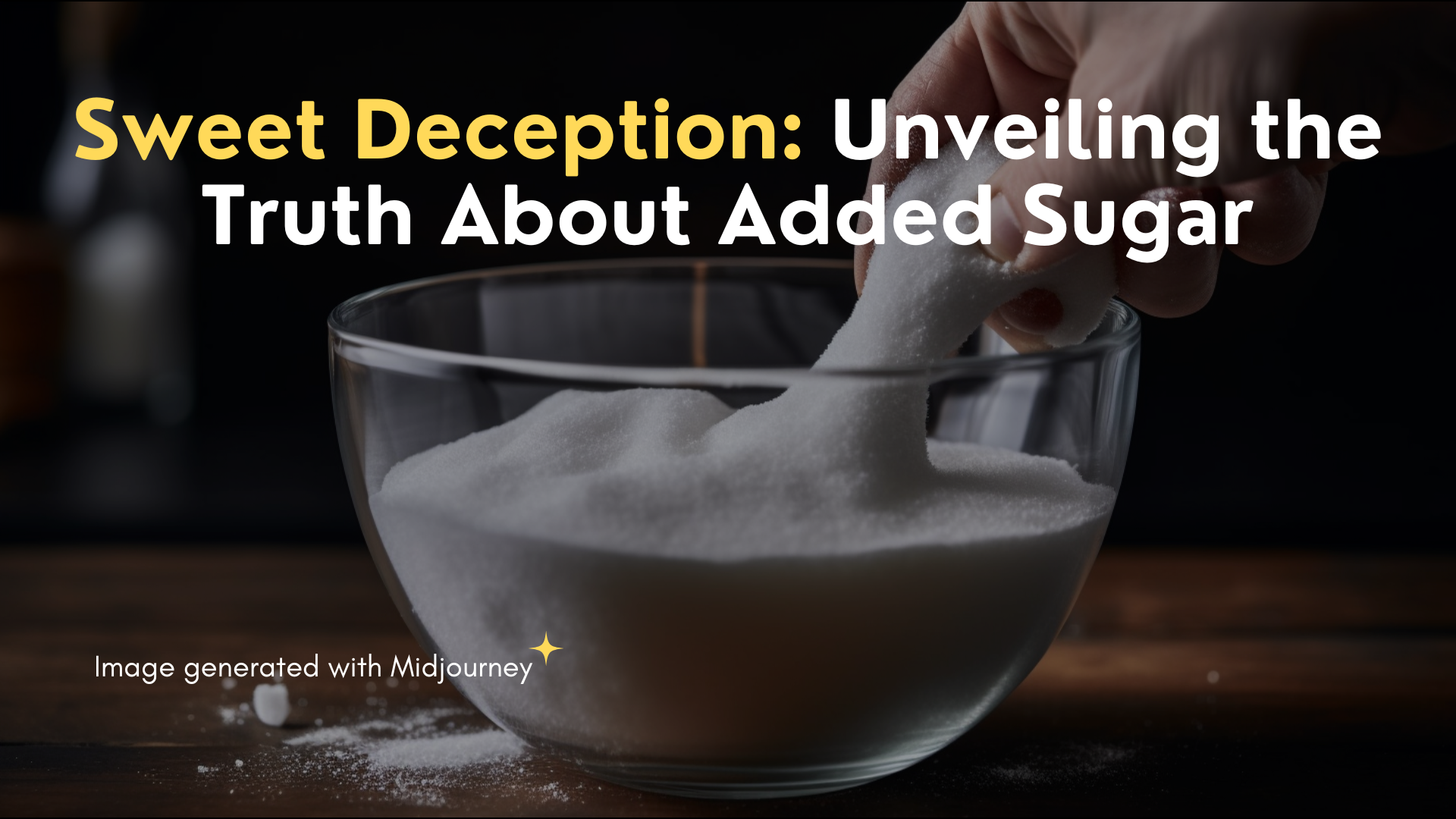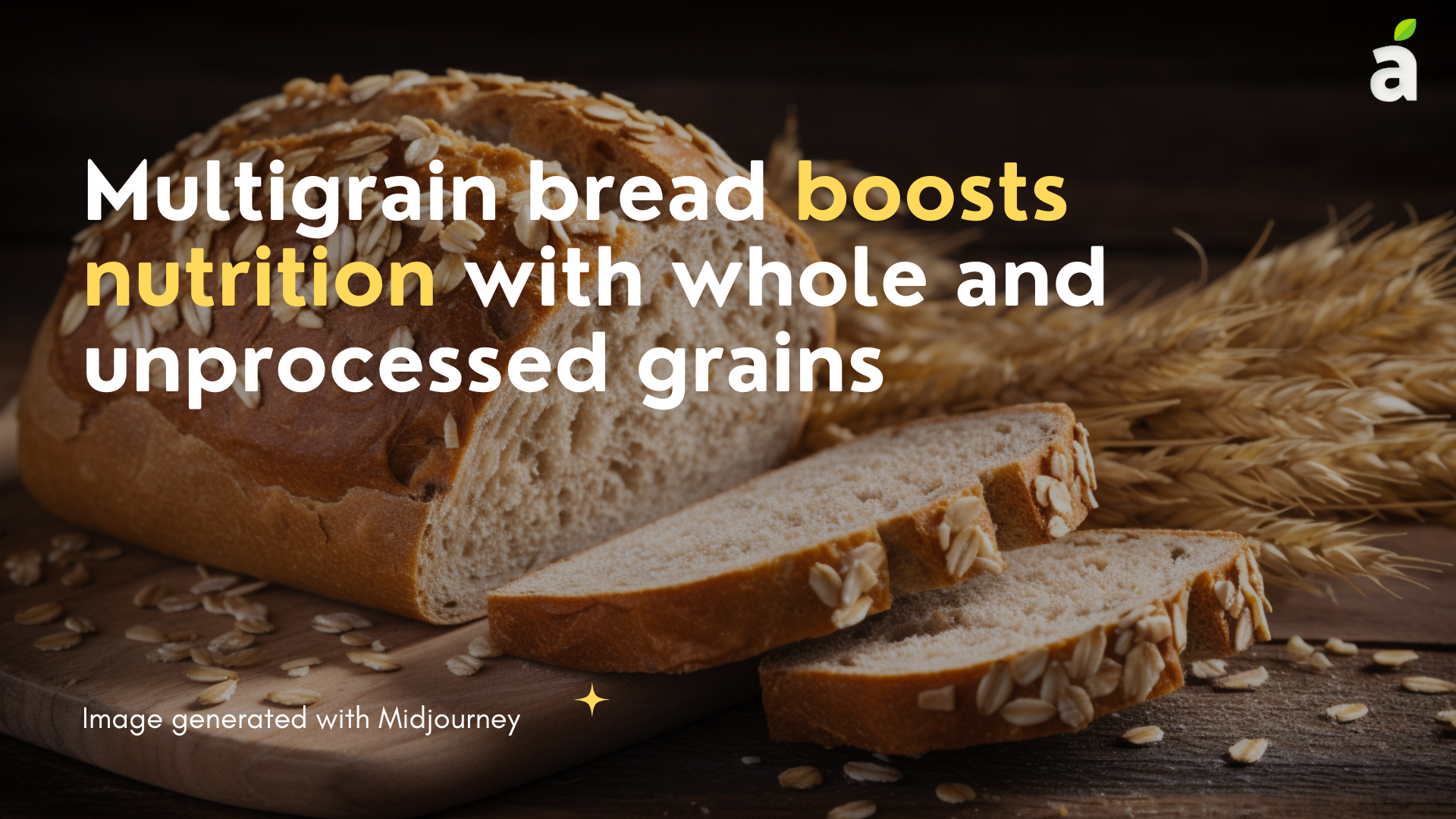Published Date January 24, 2003
The Impact of ‘Added Sugars’
By Naurin Ansari
3 min read
Last update date: January 24, 2003

In today's world, you’ll find added sugars prominently present in numerous processed foods and beverages. They are added to enhance taste and appeal, but it's important to be aware of the potential health risks associated with excessive consumption. In this blog, we will delve into the world of added sugars, helping you understand what they are, the consequences of consuming too much sugar, identifying foods high in added sugar, and providing practical tips for reducing your intake. Together, let's uncover the sweet truth about added sugars and take control of our health.
What is Added Sugar?
Added sugars encompass various sweeteners that are added during food processing or preparation. Examples include sucrose, dextrose, syrups, and concentrated fruit or vegetable juices. It's important to note that naturally occurring sugars in milk, fruits, and vegetables are not classified as added sugars. For a 2,000-calorie diet, the recommended Daily Value for added sugars is 24 grams for adult women and 36 grams for adult men.[6]
Sugar-sweetened beverages, baked goods, desserts, and sweets are the primary sources of added sugars in our diets. These products typically contribute a significant amount of added sugars to our daily intake. By being aware of these sources, we can make informed choices to reduce our consumption of added sugars and prioritise our health.
Consequences of Excessive Sugar Consumption
When you consume excessive amounts of added sugars, you're introducing calories without any significant nutritional benefits to your diet. This makes it challenging to maintain a balanced eating pattern without exceeding your calorie intake.
The consequences of consuming too much sugar can be serious for your health. Here are some risks associated with high sugar intake that you should be aware of:
- Weight Gain and Obesity: Consuming excessive amounts of added sugars contributes to an increased calorie intake, leading to weight gain and a higher risk of obesity.
- Increased Risk of Chronic Diseases: High sugar consumption has been linked to an elevated risk of developing chronic conditions like type 2 diabetes, cardiovascular disease, and non-alcoholic fatty liver disease.
- Dental Health Issues: Regular consumption of sugary foods and beverages can promote tooth decay and cavities, especially when proper oral hygiene practices are not followed.
- Negative Impact on Nutrition: Foods that are high in added sugars often lack essential nutrients, displacing more nutritious options from your diet and compromising your overall nutritional balance.[2]
Foods High in Added Sugar
Not all fruit juices are the same. Some contain only fruit juice with no added sugars or additives, while others are loaded with sugar and additives. Check product labels for juices that are 100% juice or have no sugar added. Alternatively, opt for whole fruits.
Are you unknowingly starting your day with a candy bar-like breakfast? Granola and snack bars may seem healthy but can be high in sugar. Avoid bars with sugar listed as one of the top three ingredients. Instead, choose bars with lower sugar content or opt for a handful of nuts and unsweetened dried fruit as a snack.
Added sugars can be hidden in various foods, including non-sweet-tasting ones. Be mindful of sugary beverages like soft drinks, fruit juices, and sweetened coffees/teas. Apart from them, even processed foods like snacks, cereals, flavoured yogurts, and granola bars can also contain significant amounts of added sugars. Even baked goods often contain added sugars. As frequently as possible choose foods that are either homemade or choose products that contain natural sugars.[3]
Tips for Reducing Added Sugar Consumption
To reduce your intake of added sugars, try these practical tips:
- Choose Plain Yogurt: Opt for plain yogurt without added sugar and enhance its taste by adding fresh or frozen fruit, unsweetened applesauce, or a sprinkle of cinnamon.
- Select Low-Sugar Cereals: Look for cereals with 5% or less of the daily value of added sugars. Add sliced ripe berries or bananas to your cereal for natural sweetness.
- Opt for Sugar-Free Beverages: Quench your thirst with sugar-free options like water, seltzer, herbal tea, or coffee. For a hint of flavour, add a slice of orange, lemon, lime, or cucumber.
- Satisfy Your Sweet Tooth: When craving something sweet, enjoy a cup of ripe fresh fruit, a quarter cup of unsweetened dried fruit, or a one-ounce square of >75% dark chocolate.
- Reduce Sugar in Baking: Decrease the amount of added sugar by 1/4 to 1/3 cups in baking recipes. Alternatively, use unsweetened applesauce or mashed ripe banana instead of one cup of sugar.
- Practice Portion Control: Indulge in your favourite sugary treats but in smaller portions. Savour each bite to fully enjoy the sweetness.
- Adjust Your Sweetness Perception: As you gradually reduce your overall sugar intake, you may notice a decrease in cravings and find certain foods too sweet. Your taste senses will adapt over time.
By implementing these strategies, you can actively reduce your consumption of added sugars and improve your overall well-being. Choose whole foods, prepare meals at home, and be mindful of condiments to maintain a balanced and healthy diet.[4][5]
Takeaway
By understanding the impact of added sugars, identifying high-sugar foods, and adopting practical strategies to reduce your consumption, you can ensure that your body does not get free and worthless calories from sugar.
References
- https://www.fda.gov/food/new-nutrition-facts-label/added-sugars-new-nutrition-facts-label
- https://www.cdc.gov/healthyweight/healthy_eating/sugar.html
- https://www.everydayhealth.com/pictures/high-sugar-foods-youre-probably-eating-every-day/
- https://www.hsph.harvard.edu/nutritionsource/carbohydrates/added-sugar-in-the-diet/
- https://www.verywellhealth.com/cutting-sugar-intake-tips-5096025
- https://www.hsph.harvard.edu/nutritionsource/carbohydrates/added-sugar-in-the-diet/#:~:text=The%20AHA%20suggests%20a%20stricter,of%20sugar)%20for%20most%20men.
Keep reading

The germination of the seed
It is expected of women to take the utmost care during pregnancy. They are given a list of do’s and don’ts during pregnancy and even after delivery
By Hetvi Shah

The Dark Side of Chocolate
By Hetvi Shah

The Marvels of Multigrain Bread
By Naurin Ansari

Unlocking the Secrets of Cholesterol
By Naurin Ansari
Choose Healthy With Us.
Know the real truth about your food. Stay informed and healthy, for free.

Download the App Now
Certified nutritionists trust our food recommendations. Safe to say, so can you :)











